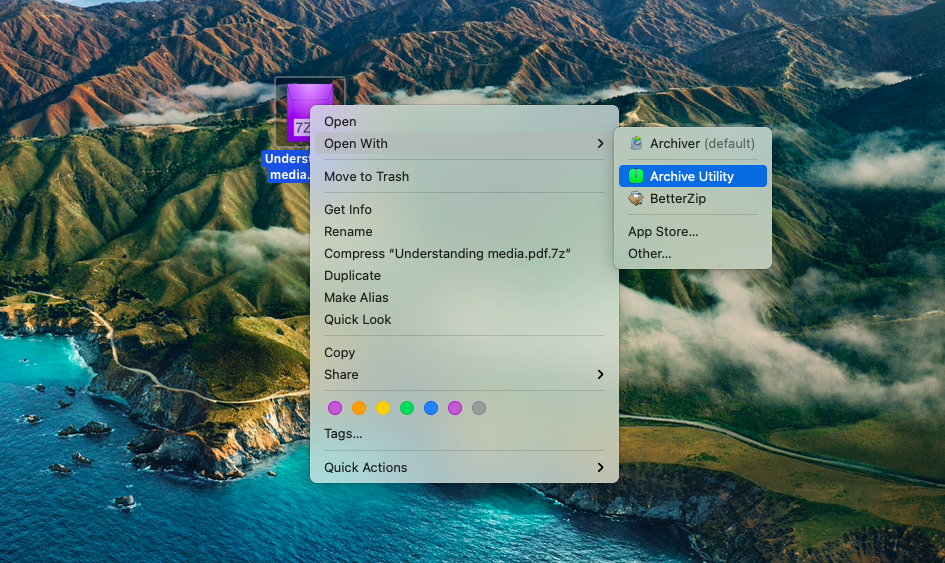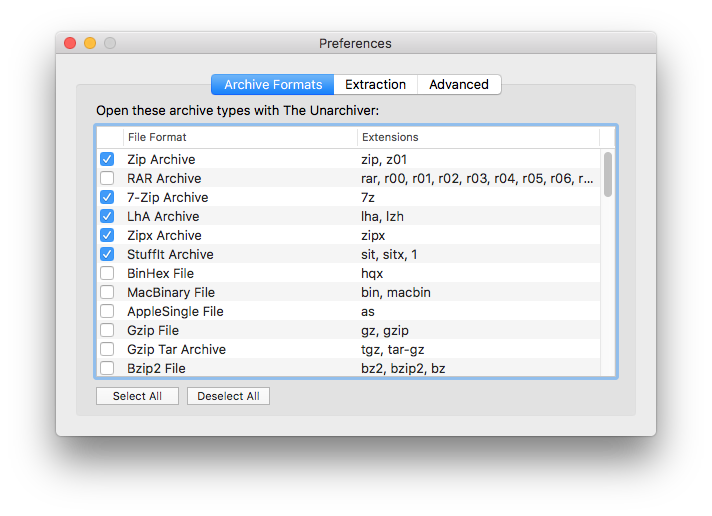

- Files 7z mac how to#
- Files 7z mac zip file#
- Files 7z mac archive#
- Files 7z mac zip#
- Files 7z mac free#
But if you want to pack the files into Zip format then use "%%X.zip" instead of "%%X.7z".
Files 7z mac how to#
How to Use 7Zip to Create Multiple Compressed Folders at once?

Files 7z mac free#
Files 7z mac archive#
Apart from that, you will be able to archive and unarchive multiple files using 7Zip. You will get to know how to compress multiple folders containing multiple sub-folders that can be packed at once separately. In this article, you will definitely learn how to make use of 7Zip like a pro. This means 7Zip creates smaller and safer archives compared to other archiving applications.
Files 7z mac zip file#
The biggest standout feature of a 7 Zip file is that it uses a higher compression ratio, along with AES-256 encryption. 7z as the file extension and has similar to other archive formats, such as ZIP, RAR, and ISO. If you would like to comment on this article or pose a question, please leave your feedback in our discussion forum.7 Zip is a free and open-source file compression tool. Luckily, The Unarchiver makes things easy by providing you with quick way to extract non-zipped archives. While OS X has you covered with ZIP files, the other ones might throw you for a loop. That said, if you keep running across archive formats (such as the aforementioned 7-Zip variety) that you can’t open, then you should most definitely try out The Unarchiver.įor the most part, the only archive files you’re likely to run into on a consistent basis are ZIP, RAR, and 7z. Keep in mind, The Unarchiver only extracts, you cannot create new archives with it, though you can create ZIP archives using the the built-in abilities found in OS X. When you’ve finally chosen your destination and you’re ready, simply click the “Extract” button and the archive’s contents will be dumped into it. Here, the destination folder is “Documents” but you can navigate to another location or create a new folder in which to place your extracted items. You’re unlikely to really need to bother with this so we won’t cover it other than to say that it deals primarily with filename encoding, and the confidence threshold.Īs we showed you earlier, when you open an archive with The Unarchiver, by default it will ask you to choose a destination folder. When you successfully extract an archive, you can open the extracted folder, or move it to the trash.įinally, there’s the “Advanced” tab. There are also options to create new folders for extracted files, set the modification date, and to decide what happens after successfully extracting an archive. By default, The Unarchiver will ask you for a destination folder, but you can also choose the same folder as the archive, or some “Other” location. Next is the “Extraction” tab, which allows you to choose where you extract archives. If you change your mind and want to select archives individually, then click “Deselect all”.

If you want to open all archive types supported by The Unarchiver then you can click the “Select all” button. If 7z isn’t already selected, then go ahead and check the box next to it so that you can automatically open 7-Zip archives with The Unarchiver.

As you can see, there’s quite a few and among the first is the 7-Zip or 7z format. When you open The Unarchiver, you’ll see its preferences.


 0 kommentar(er)
0 kommentar(er)
